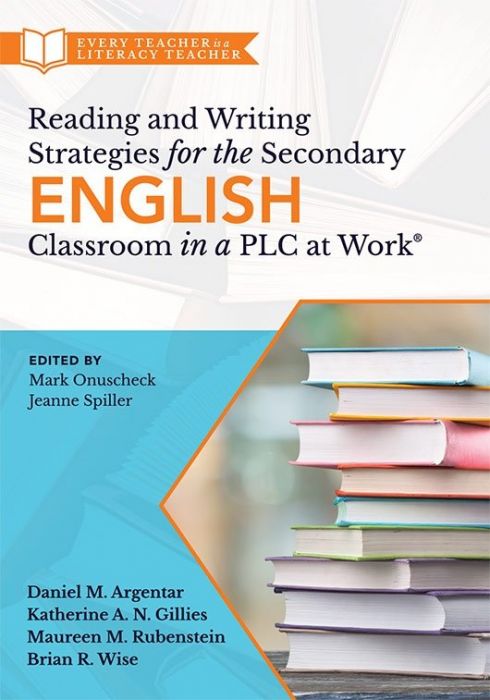
Reading and Writing Strategies for the Secondary English Classroom in a PLC at Work®
Work in collaborative teams to close literacy achievement gaps and improve student skill development across grades 6–12. Utilize evidence-based reading interventions to meet Common Core’s reading, writing, and literacy standards.
A guide to closing literacy achievement gaps and improving student ELA standards skill development
Close literacy achievement gaps across grades 6–12. Part of the Every Teacher Is a Literacy Teacher series, this resource highlights how English language arts (ELA) educators can work collaboratively to combat literacy concerns and improve student skill development. The authors provide, describe, and give examples of many literacy-based strategies that you can immediately begin integrating into your ELA classroom.
- Examine the role that professional learning communities (PLCs) play in supporting and advancing the instructional practices of educators through collaborative teamwork.
- Discover ready-to-use, adaptable strategies to develop students’ prereading, during-reading, and post-reading skills through guided practice.
- Learn to enhance student writing competencies and create a common literacy language across all disciplines.
- Study techniques for providing immediate assistance and feedback to students.
- Receive guidance on designing and implementing assessments.
- Explore best practices for strengthening team collaboration.
Related Topics
InstructionLiteracyProfessional Learning Communities at Work®Professional Learning Communities
Additional Information
“This book is a tremendous resource for English language arts teams. The text goes beyond strategy identification by outlining steps to implement each strategy and offering invaluable adaptations for tailoring strategies to the needs of diverse learners. I look forward to implementing this resource with my own collaborative team.”
“This essential book uses the lens of literacy to focus collaborative teams on their goal of student achievement. Its refreshing and disciplined approach provides valuable guiding questions and conversation starters that promote students’ capacity for comprehension and support their growth in reading and writing.”
When can I access my eBook? Your eBook will be accessible through VitalSource once your payment has been processed.*
*When using a check or purchase order, the order submitted online will not be processed until Solution Tree receives the check or a copy of the signed official purchase order. Your purchase order must note payment terms of net 30 days. We cannot process purchase orders that do not note these payment terms. Please submit all payments to [email protected].
How do I access my eBook?
To access your eBook:
- Create a free VitalSource account by visiting VitalSource.com. If you already have a VitalSource account, please log in to your account.
- Paste the redemption code that Solution Tree will email you in the “Redemption Code” field on VitalSource.com/Redeem. (Note: You can also access your redemption code within your Solution Tree account under the “eBook” section.)
- Click “Redeem.”
- Enjoy! Once your code is redeemed, your book will be added to your VitalSource Bookshelf and can be read anytime, anywhere.
What are the technical requirements for accessing the eBook? A VitalSource account is required. To sign up for your free account, please visit VitalSource.com.
What if I have trouble accessing my eBook? Please contact VitalSource by emailing [email protected] or by utilizing their Live Chat feature.
What are the shipping and handling costs? There are no shipping or handling costs associated with eBooks. For paperback and hardcover book purchases, standard shipping costs apply. Please visit the Product Orders page for more information on shipping and handling costs.
Can I purchase multiple copies of the same eBook? Bulk orders are not currently available through the website. Website purchases are limited to one eBook per title, per account. If you want to order multiple copies of an eBook, please contact customer support at [email protected].
What if I need to request a refund on my eBook order? RETURN POLICY: We are unable to accept returns or cancel previously placed eBook orders.





